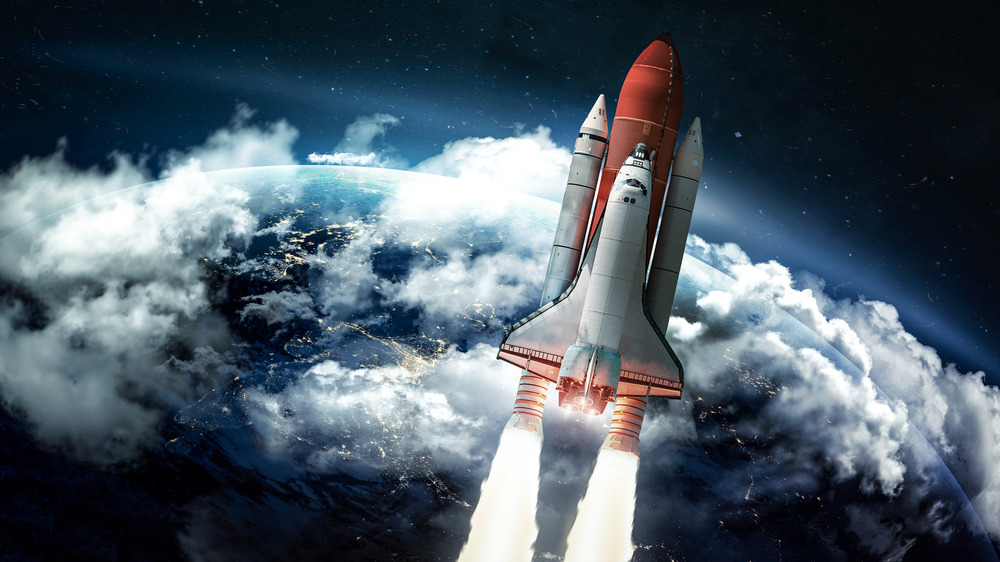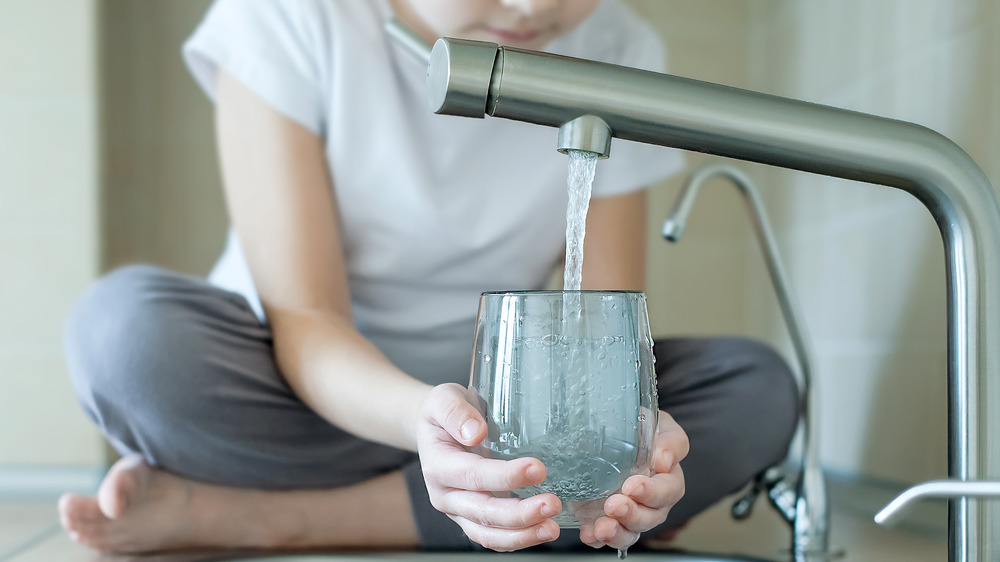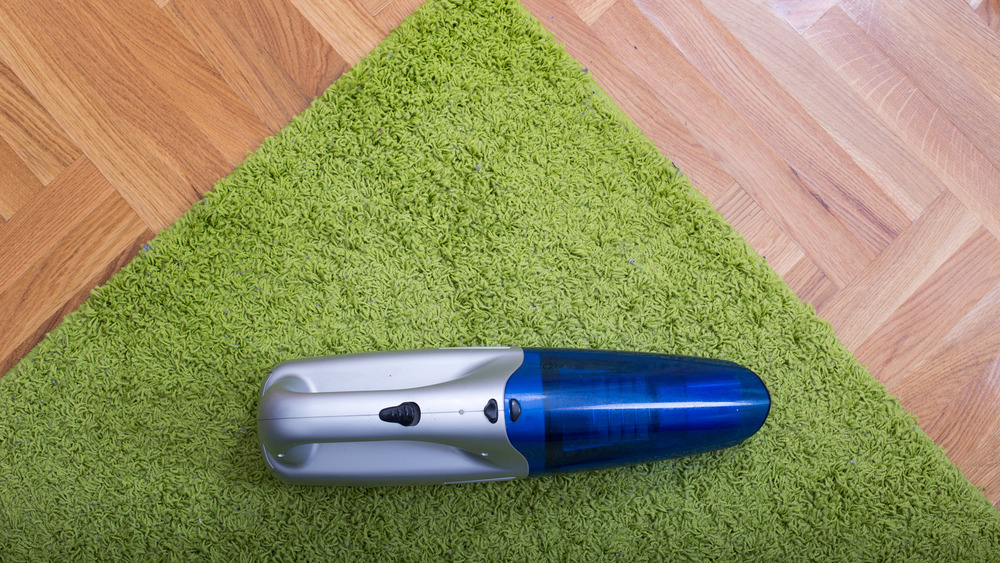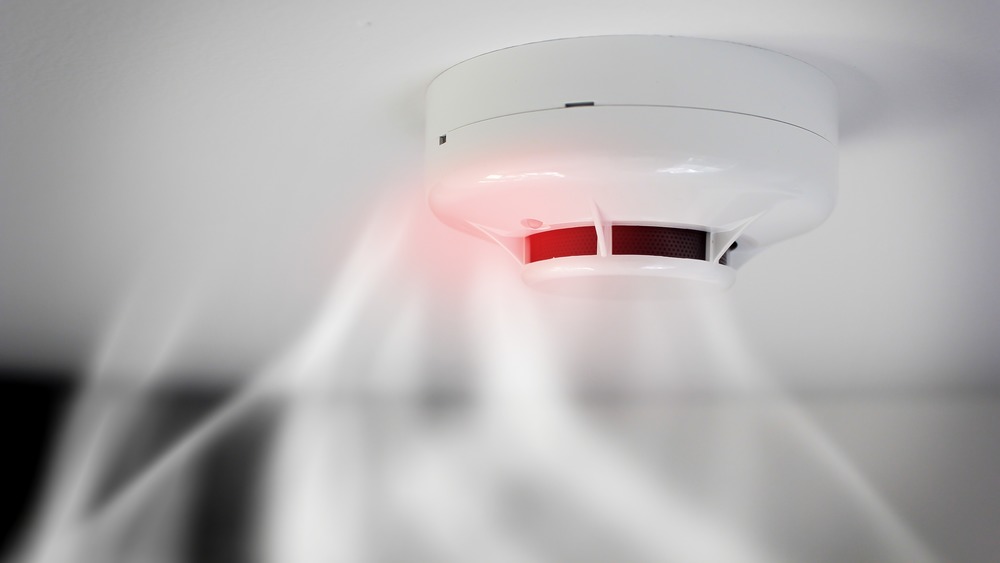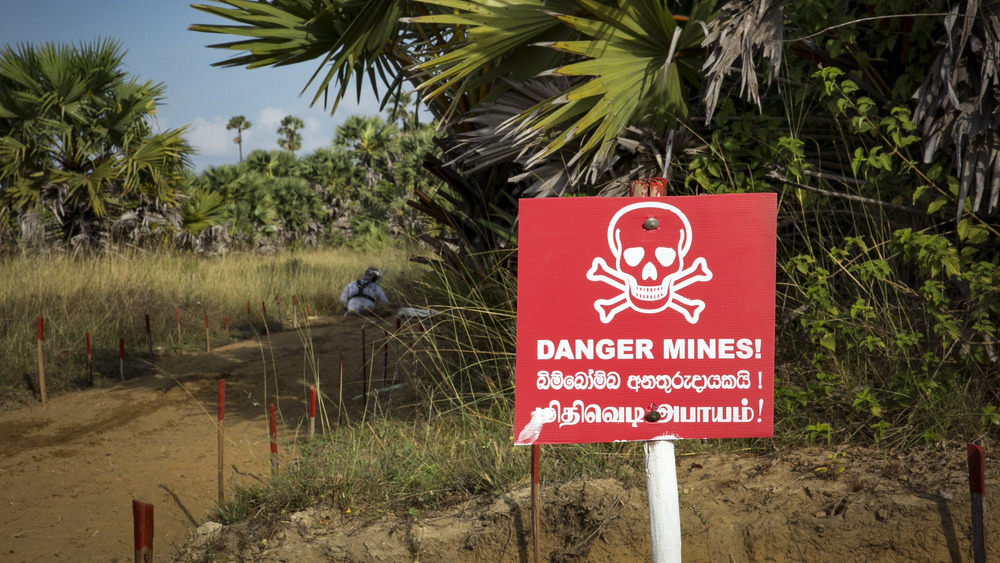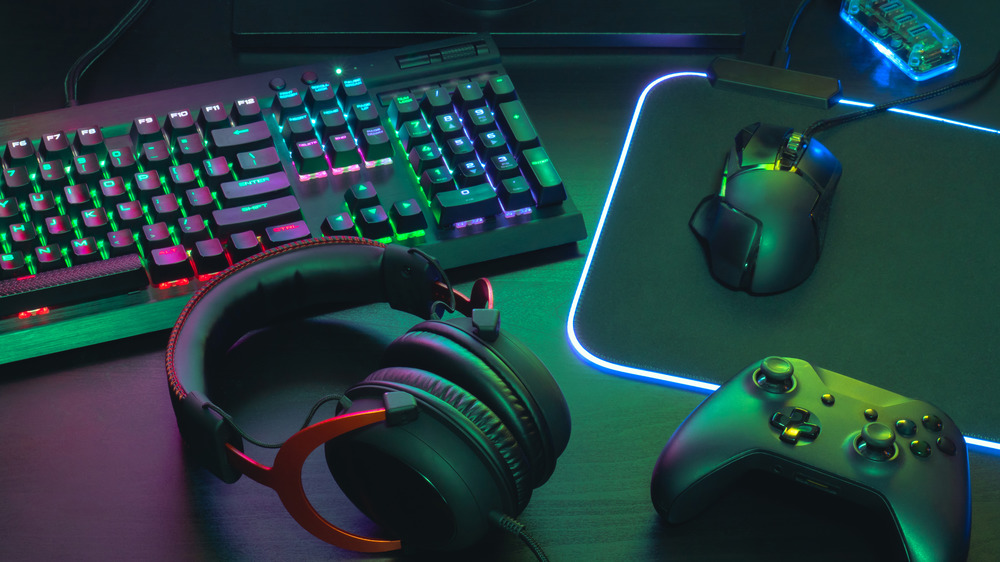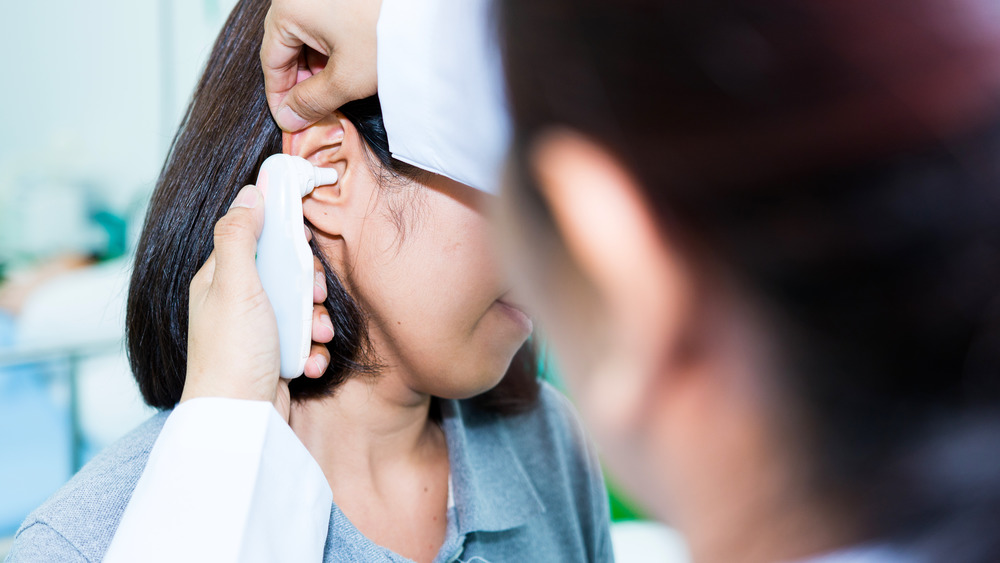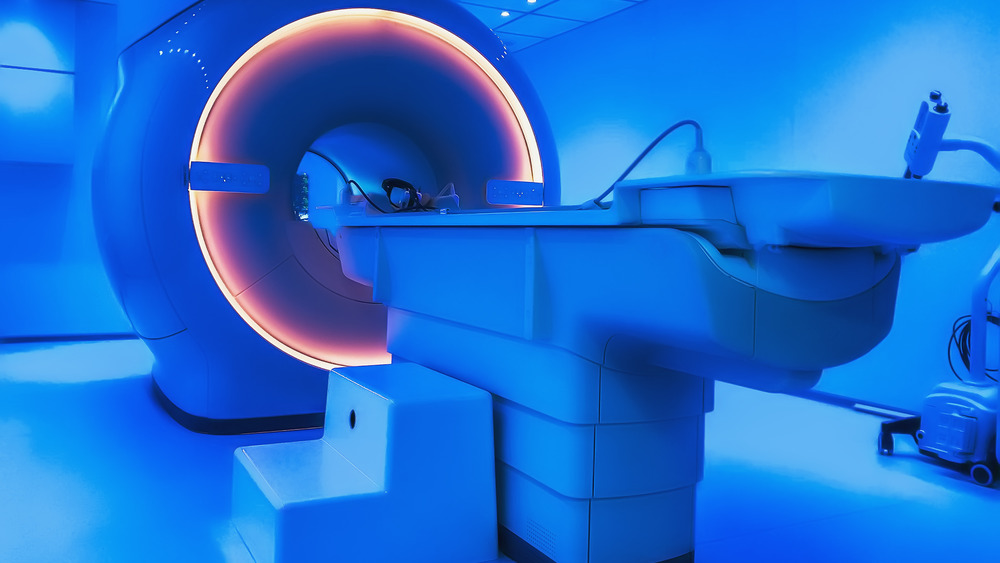Technology We Wouldn't Have Without The Space Race
In 1962, President John F. Kennedy famously said that by the end of the decade, the United States was going to put a man on the moon. NASA stepped up and did it, beating his deadline by about five months.
While Kennedy is associated with this momentous push to explore the universe beyond the bounds of our own little blue-green marble, History shares a surprising tidbit: Kennedy actually wasn't all about space exploration and the moon. It was in a 1962 meeting with NASA and his own advisors that he remarked, "I'm not that interested in space."
So, why push for it? He was interested in proving American superiority over the Soviets, and it was his vice president — Lyndon B. Johnson — who suggested a great way to do that was by beating them to the moon.
And it's a good thing, too. It wasn't just space shuttles and space suits that needed to be designed to get men on the moon and into space. There were a ton of other technologies that also needed to be developed or perfected, and many of those ended up being used right here on Earth. Do some digging, and you'll find that our world today would look quite different if it wasn't for the space program — for starters, these technologies wouldn't exist.
Purifying water all over the world
How much water is needed to survive — and be healthy — is, according to Healthline, a complicated equation of activity levels, climate, age, overall health, and other environmental factors. One thing that's for certain is that people can't live without it, and NASA is to thank for making major steps forward in developing water treatment technology.
Their research into small, lightweight water purifiers goes back to the 1960s, when they were developing technology for the Apollo missions. There was a long list of requirements: in addition to being lightweight, the purifiers also needed to have minimal power usage and work without regular monitoring. The result of all that research was a unit that weighed about 9 ounces, was about the size of a deck of cards, and dispensed silver ions into the craft's water supply to keep that supply clean.
It was that technology that opened up a whole new avenue of research, and it's one they're still active in developing and installing. In 2006, the nonprofit Concern for Kids installed a water filtration system in Kendala, Iraq. The unit contained technology from NASA and was the first of a number of systems built and installed in communities that had lacked access to clean drinking water.
Photo technology is shaping the way we see the world
It wasn't that long ago that photographs provided a rare glimpse into the world around us. Fast forward to 2018, and that's changed drastically — The Conversation says an estimated 1 trillion photos were taken in that year alone. That's mostly because of all the photo technology at our fingertips on our smartphones, and that's thanks to NASA.
Space says that while the first digital camera was the brainchild of Eastman Kodak, they were building on technology that went back to the 1960s and research done by NASA's Jet Propulsion Laboratory. They were looking for ways to create a small and lightweight device that could withstand the rigors of space, and it was Eugene Lally who started experimenting with using photosensors to capture then digitize light signals, which would then be used to create images.
By 1965, NASA had advanced the technology quite a bit — and they'd come up with the word "pixel" to describe each "picture element." Fast forward to the 1990s, and NASA's lab made another massive advancement with the development of complementary metal-oxide semiconductor image sensors (CMOS), which allowed the development of miniature cameras capable of taking high-quality photos... like the one in your phone.
Power tools make life more convenient
Anyone who's ever reached for a cordless drill or a cordless vacuum should thank their lucky stars NASA was around in the 1960s, coming up with some very unique problems that needed unique solutions.
The first problem was developing a wrench that could be used in zero gravity... without making the astronaut spin along with what they were trying to tighten. Advantageously, Black & Decker had unveiled cordless power tools in 1961, and by the mid-60s, NASA, Black & Decker, and the Martin Marietta Corporation were invested in making a zero-impact wrench that could be used in space. Pretty nifty, right? It's certainly made DIY projects around the house much, much easier!
NASA also needed a lightweight yet powerful drill for taking samples of the moon's surface and subsurface. The biggest problem was the power source. According to Space Foundation, the battery-operated power source and computerized power management system Black & Decker developed was spun off into a wide range of cordless power tools — including the Dustbuster — were made commercially available to resounding success.
Helping future astronauts grow up big and strong
What on Earth does NASA have to do with the development of baby food? Quite a bit, it turns out.
In the 1980s, the Space Foundation says NASA was already looking into food and oxygen sources that would be viable on long-term, interplanetary missions. Part of what their Closed Environment Life Support System program was analyzing was the nutritional value of microalgae. Along the way, they discovered an algae (Crypthecodinium cohnii) and a fungus (Mortierella alpine) that each contained particularly important forms of essential fatty acids that are crucial to the development and continued health of the brain, cardiovascular system, and eyes, among other organs.
When NASA's program came to an end, a group of scientists that had been working on the program broke off to continue their research. They founded a company called Martek Biosciences, and one of the things they focused on was baby formula. At the time, there were no infant formulas on the market that contained these fatty acids, so they created a formula supplement called Formulaid. It's now found in almost all baby formulas sold in 75 different countries.
The smoke detector makes life easier for bad cooks
The smoke detector has been around for a surprisingly long time. According to My Smoke Alarm, they date back to the 1890s, and the first patent for one was issued in 1902. So, what's NASA got to do with them?
NASA was behind the development of a smoke alarm that had adjustable sensitivity, which basically means it's not just "on" and "off." It was Honeywell that took their technology and made it commercially available, and they're actually still working on more improvements for the future.
The National Institute of Standards and Technology says that NASA is still doing extensive research on the size of the smoke particles created by various materials found on the International Space Station. That information can be used to calibrate smoke detectors to be more sensitive to some materials while ignoring others, which could go a long way in making not just homes but industrial and commercial buildings much safer.
Space blankets
Space blankets might sound like something out of a truly terrible science fiction novel, but they're very real and incredibly important. NASA developed the silvery, reflective, lightweight, and insulated blankets in 1964 and since then, they've used the blankets on almost every mission. They've been vital technology: when Skylab lost a heat shield and was in danger of overheating to critical levels, it was the simple silver blanket to the rescue.
These blankets have been just as important on Earth. They're a staple in emergency and first-aid kits, and the thin, lightweight material has proved a life-saver when it's been used by the survivors of natural disasters. The material has become crucial for the medical industry, where it's used to keep patients warm before, during, and after surgical procedures, and protect hospital staff who have to work in cold environments.
They're a must-have for marathon runners, too. At the end of a race, participants will wrap themselves in the blankets to prevent a post-race chill and hypothermia. Space blanket technology has also been used in everything from sleeping bags to insulated gloves and jackets, letting us keep warm while still allowing freedom of movement.
Detonating landmines, one at a time
Landmines are a shockingly widespread problem, and one that UNICEF says is scattered across 64 countries. No one's sure how many landmines are just waiting for an unsuspecting victim, but they estimate there's around 110 million still active. Surprisingly, one of the best ways to remove them is with the help of rocket fuel.
It absolutely sounds like something that should be the setup to a disturbingly violent cartoon, but it's not. Thiokol Propulsion, DE Technologies, Inc., and NASA have all partnered to create something called the Demining Device. It's essentially a flare that's placed next to an uncovered mine then activated remotely. The slow burn of the flare burns a hole in the mine's casing then ignites the explosives inside, neutralizing the mine. Pretty cool, right?
Where does NASA come in? They provide the fuel in the form of Reusable Solid Rocket Motor propellant. For each rocket launch, NASA has to have some extra fuel on hand, just in case. If it doesn't get used in the launch, it can't be saved and reused in another. But it can be used in life-saving technologies like the Demining Device — a win-win for everyone.
Seeing clearly
How many people use prescription glasses, or any kind of sunglasses? Probably an overwhelming majority, and anyone who does can thank NASA for helping make their eyeglasses and sunglasses lightweight and scratch-resistant.
Plastic lenses became the norm in 1972, with a Food and Drug Administration (FDA) mandate that said all lenses in prescription glasses and sunglasses had to be shatter resistant. It really just made a heck of a lot of sense, but there was a problem. Plastic didn't shatter, but it did scratch — easily — and here's where NASA comes in.
At the time, they were working on one of the most unlikely of projects — a water purification system. One of the membranes was covered by a plastic film, and the process of coating the membrane with plastic was then moved to another project — creating a scratch-resistant coating for helmet visors. That technology was eventually used on plastic surfaces across the aerospace field, and in 1983, Foster-Grant licensed that technology from NASA to use in eyeglasses. The rest is, as they say, history.
Safer roads? Thanks, NASA
Road safety might seem like the most unlikely thing that could be improved by NASA technology, but it has been. Like... a lot. Even better than just an improvement, it's also saved countless lives.
In the 1960s, NASA came up with a seemingly ingenious — and pretty simple — solution to a big problem. Aircraft — including the space shuttles — landing in wet conditions had a tendency to slip on the runways, so they came up with a grooved pavement. Water was channeled off the pavement, the chances of hydroplaning went down, and traction was vastly improved.
Way back in 1966, the technology was tested on a California highway that was the frequent site of traffic accidents caused by wet pavement. After the installation of the grooves, accidents declined by a whopping 98 percent. By 1993, the same technology had been applied to particularly dangerous patches of highway in every state in America — along with places like sidewalks, ramps, and even holding pens for cattle. It's made a huge difference.
Imagine a world without a mouse
It's almost impossible to imagine a world pre-computer, and one of the things that's made the clunky, giant computers of yesteryear so much more accessible to the everyperson is major improvements in the interface. And that includes the mouse.
Back in the 1960s, computers were still reserved for certain limited functions that definitely didn't involve so many cat videos and memes. It was NASA's Bob Taylor who saw a much broader functionality in them, if only it was easier to interact with them. He started looking at new ways of manipulating data, and that took him to Doug Englebart and the Stanford Research Institute.
Englebart built his first mouse prototype in 1964, three years after he first got the idea for a wheelie device that would point to coordinates on a screen and allow a user to manipulate them. In order to develop and test possible pointing devices, the Doug Englebart Institute says he applied for a grant from NASA and Taylor, got the grant, and did the testing. The result was a confirmation that the so-called "X-Y position indicator for a display system" was the best idea. Also? That they didn't go with another alternative that was controlled via a person's knee.
Nighty-night, sleep tight
Thankfully, mattress technology has progressed way beyond a bag of hay or straw, right? Anyone who loves their memory foam mattress should give NASA a big shout-out, because they're the ones that created that back-saving technology.
The foam that countless people fall asleep on every night got its start back in the 1960s, when NASA was developing a material that wouldn't just provide an extra bit of comfort to those sitting on their airline seats but that would also absorb shock and increase a person's chance of surviving if there was a crash. It was originally pioneered for the Apollo command module, but it quickly became obvious that a shock-absorbing material that evenly distributed a person's weight could be used for so much more.
Today, it's used not just in mattresses but also in everything from helmets and shoes to prosthetics for humans and animals alike.
Thermometers don't have to go there anymore
One of the first things a doctor might do if you're feeling a bit under the weather is take your temperature, and when it comes time for that, everyone should be grateful for NASA and the development of a technology that means thermometers don't always have to go you-know-where anymore.
In 1991, New Scientist announced the release of a new thermometer that could take a person's temperature via the ear canal. There were a bunch of benefits — not only did it give results quickly, but since it didn't touch a person's mucous membranes, there was no chance of it spreading an infection. It was also easy to protect with a disposable cover that wouldn't impact the accuracy of a readout, and that's all good news for doctors and patients alike.
The sensors in the thermometer were based on ones developed by NASA and its Jet Propulsion Laboratory for taking the temperature of things much, much farther away. Originally designed for the Infrared Astronomical Satellite, the sensors were meant for measuring the infrared radiation emitted by distant stars and planets, then calculating their temperatures.
Some seriously life-saving digital imaging technology
There's a wide array of digital imaging technology that the professionals — medical and otherwise — rely on every day, and starting with the technology that lets doctors see inside a patient's body without just opening it up, a lot of it was developed by NASA.
The list is pretty long, so let's start with the MRI and CAT scans. The digital processing techniques those machines use started out as a way for NASA to enhance photos taken of the moon's surface. That technology goes all the way back to the Apollo lunar landings, and there's technology developed for the Hubble Telescope that proved to be an invaluable addition to the medical industry, too. The silicon chips designed for the Hubble have been adapted into digital breast imaging technology and can detect even the tiniest of abnormalities in the tissues of the breast.
Then, there's the Advanced Computed Tomography Inspection System, or ACTIS. That was originally developed to detect structural defects in things like rocket engines, casings, and assemblies — defects that could lead to catastrophic failures. Since then, it's been adapted for a shocking array of uses. It's been used to view the inside of time capsules without opening them, to map the skull of dinosaurs still encased in rock, and perhaps most importantly, to examine the potentially radioactive contents of waste drums for the Department of Energy and create a sort of toxic "fingerprint" of the contents without opening the can. That's good for everyone.
